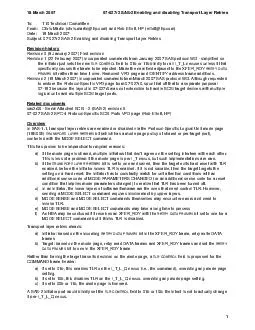PDF-18 March 2007 07-027r2 SAS-2 Enabling and disabling Transport Layer Re
Author : pasty-toler | Published Date : 2015-10-12
Revision 0 9 January 2007 First revisionRevision 1 22 February 2007 Incorporated comments from January 2007 SAS protocol WG simplified so sas2r06 Serial Attached
Presentation Embed Code
Download Presentation
Download Presentation The PPT/PDF document "18 March 2007 07-027r2 SAS-2 Enabling an..." is the property of its rightful owner. Permission is granted to download and print the materials on this website for personal, non-commercial use only, and to display it on your personal computer provided you do not modify the materials and that you retain all copyright notices contained in the materials. By downloading content from our website, you accept the terms of this agreement.
18 March 2007 07-027r2 SAS-2 Enabling and disabling Transport Layer Re: Transcript
Download Rules Of Document
"18 March 2007 07-027r2 SAS-2 Enabling and disabling Transport Layer Re"The content belongs to its owner. You may download and print it for personal use, without modification, and keep all copyright notices. By downloading, you agree to these terms.
Related Documents














